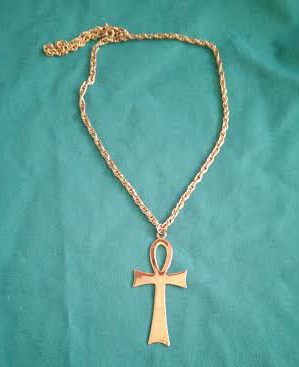Egypt is among the world's oldest civilizations. It has a long history, extending over thousands of years. The Ancient Egyptians created a powerful legacy that has influenced other civilizations for millenia. It isn't any wonder that they also influenced the way we play, creating games that spread to other lands and were handed down in various forms for generations, versions of which still exist today.

In the early days of Egyptian civilization, groups of small villages that early settlers had established along the Nile joined together to form kingdoms. At first, there were three of them (Payne 29-30):
- The Bee Kingdom in Lower Egypt -- at the Nile delta, on the Mediterranean
- The Reed Kingdom in Middle Egypt -- near the site of modern Cairo
- The Hawk Kingdom in Upper Egypt -- near the rapids that lay between Egypt and the Nubians to the South
Note: If you're wondering why "Lower Egypt" was in the northern part of Egypt and "Upper Egypt" was in the south, it's because the Ancient Egyptians weren't concerned about north and south with regard to their kingdoms. They lived along the Nile, their major source of water and transportation, and when they thought about the relations between cities and kingdoms, they were most concerned about whether they were upriver or downriver. So, "Upper Egypt" was the kingdom farthest upriver, and "Lower Egypt" was the one that was farthest downriver. The Nile just happens to flow from south to north.
Then, around 3200 B.C., the Hawk King known as the Scorpion conquered the kingdom in Middle Egypt. His successor Menes (also called Narmer), who ruled both Middle and Upper Egypt, conquered Lower Egypt as well, turning Egypt into a single nation with a single king (Payne 30, 31). However, there were still rivalries between Upper and Lower Egypt, and the people in different regions spoke different dialects (Payne 37-38).
The Ancient Egyptians believed that their kings, called Pharaohs, were half-human and half-god (Payne 30). Part of the reason for this belief may have been because the Egyptians believed that a partially-divine ruler could help ensure that life in the Nile Valley could continue smoothly by appealing to his godly relations and partly because, if the king wasn't completely human, he could be considered above the rivalries between the different regions and remain a unifying figure for the Egyptian people, no matter which region he had come from originally (Payne 35, 37-38).
Dynasties of Egyptian Pharaohs ruled Egypt for thousands of years, although in the later centuries of Ancient Egypt, foreign rulers moved in and took control for long periods. Then, in 332 B.C., Alexander the Great conquered Egypt, bringing it under Greek and Macedonian control and ending the reign of Egyptian Pharoahs forever (Payne 169-170).
Board Games
These are among the earliest known board games in history. Although many of the original rules to the games that the Ancient Egyptians played have been lost over time, other versions of the games still survive. The Ancient Egyptians played games that are the basis for many games that are played today. Scholars have used the surviving versions and sources left by the Ancient Egyptians to reconstruct rules for the game boards that have been found in tombs and other archaeological sites.
Other Games
Besides board games, the Ancient Egyptians liked to play other games, such as ball games and tug-of-war (Nardo 71). I have not created special sections for these games because I haven't found sources that offer rules for them. It's possible that none exist, the rules never having been written down or sources describing them in detail lost over time. Much of what we know about these other games comes from artwork found in tombs, showing people playing them.
There is a wall painting that depicts children tossing a ball between them with bystanders clapping, possibly to keep rhythm between the players. Some ball games also seem to have involved dance steps. Another kind of ball game involved players being carried on their friends' backs as they threw the ball between them (Nardo 71-72).
Don Nardo quotes Vera Olivova's description of children playing as shown in carved reliefs found in tombs dating from the Old Kingdom (p. 72):
. . . a boy is balancing on the shoulders of four others, and another is leaping high in the air, a feat still popular with Egyptian children today. . . . Scenes of this kind are accompanied by inscriptions like "Hold tight!" and "Look out, I'm coming!" A common game was for a file [line] of boys to pass the stiff body of one of their number back over their heads, and another, for several children holding hands to spin around in a circle. There are also illustrations of a tug-of-war between two teams of three children, of a game with one child in the middle of a ring trying to catch one of the others by the feet, and of boys . . . sitting back-to-back with arms linked, trying to pull each other over.
Barbara Mertz mentions a game known as "Going Around Four Times" which was depicted in tomb reliefs. For this game, a group of about four or five boys standing in a circle hang on to the arms of another player who stands in the middle. However, Mertz says that the rules for this game are unknown (Red Land 42).
Unfortunately, I cannot find any other sources that describe these games in more detail, and like the rules for the board games described above, we may have to rely on newer rules for similar games and scholarly re-creations to fill in the blanks.

